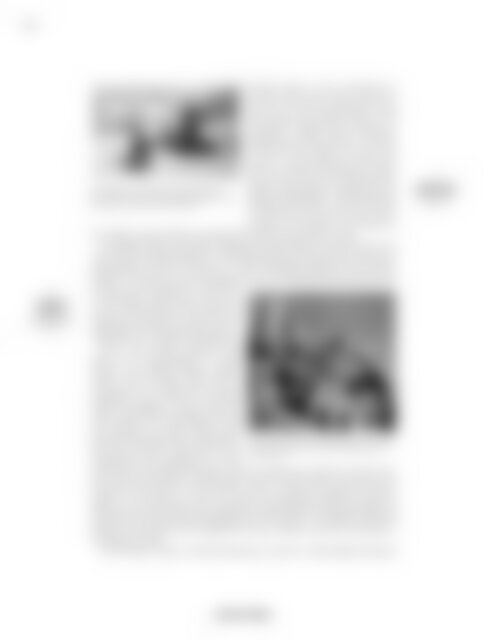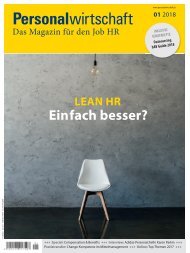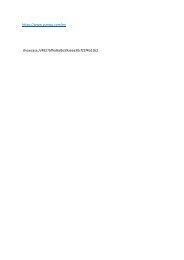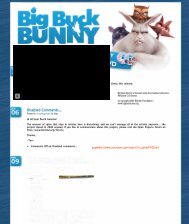Create successful ePaper yourself
Turn your PDF publications into a flip-book with our unique Google optimized e-Paper software.
148<br />
07<br />
Translated from<br />
BARNOUW<br />
Ansichten von<br />
Deutschland, 1997,<br />
p. 175.<br />
<strong>The</strong> snapshot by Colonel Parke Yingst shows Margaret<br />
Bourke-White preparing to take a photograph <strong>of</strong> the heaped<br />
up corpses on an open trailer in Buchenwald.<br />
horrible sight in the courtyard before<br />
me only when I had a chance to<br />
look at my own photographs. Using<br />
the camera was almost a relief; it interposed<br />
a slight barrier between<br />
myself and the white horror in front<br />
<strong>of</strong> me.” 06 <strong>The</strong> extent to which this<br />
“barrier,” indeed, this distance to what<br />
she could see that she created when<br />
taking photographs influenced the<br />
images themselves is demonstrated<br />
in particular by her close-ups <strong>of</strong> the<br />
corpses on the flatcar. According to<br />
her estate, Bourke-White captured this motif several times on film.<br />
As Dagmar Barnouw writes, Margaret Bourke-White was well known not<br />
only for her technical brilliance, “her lightning-fast shots and her enormous<br />
expenditure <strong>of</strong> film,” but also for “the compelling staging <strong>of</strong> her photographs.”<br />
07 Taken by the photographer from an impressive perspective and<br />
in ideal light conditions, in this photo<br />
the naked dead bodies lying one<br />
on top <strong>of</strong> the other do not seem anything<br />
like decaying corpses, but instead<br />
take on a sculptural character.<br />
Boris Lurie plainly rejected this<br />
type <strong>of</strong> art photography <strong>of</strong> dead<br />
bodies. His collages Flatcar. Assemblage,<br />
1945, by Adolf Hitler (1961) |<br />
see image p. 20, Railroad to America<br />
(1963) | see image p. 23 and Hard Writings<br />
(Load) (1972) | see image p. 80 raise<br />
the question <strong>of</strong> what exactly happened<br />
at Buchenwald as a showplace<br />
and the emotions with which photographers<br />
and spectators on site<br />
Close-up photograph by Margaret Bourke-White <strong>of</strong> the naked<br />
corpses in the yard <strong>of</strong> the crematorium at Buchenwald concentration<br />
camp.<br />
and at home regarded the flatcar with its stacked-up corpses. His first work,<br />
the <strong>of</strong>fset print Flatcar. Assemblage, 1945, by Adolf Hitler, reproduces the<br />
image <strong>of</strong> this flatcar. It does not show the sculptural staging by Bourke-<br />
White, but a shot taken by an unknown photographer that was falsely attributed<br />
to the famous photographer for many years. <strong>The</strong> slightly yellowing<br />
patina <strong>of</strong> the <strong>of</strong>fset print suggests that the original may also have been a<br />
newspaper image.<br />
In her essay “‘NO!art’ and the Aesthetics <strong>of</strong> Doom,” Estera Milman empha-<br />
06<br />
BOURKE-WHITE<br />
“Dear Fatherland”,<br />
1946, p. 73.<br />
MIRJAM WENZEL


















